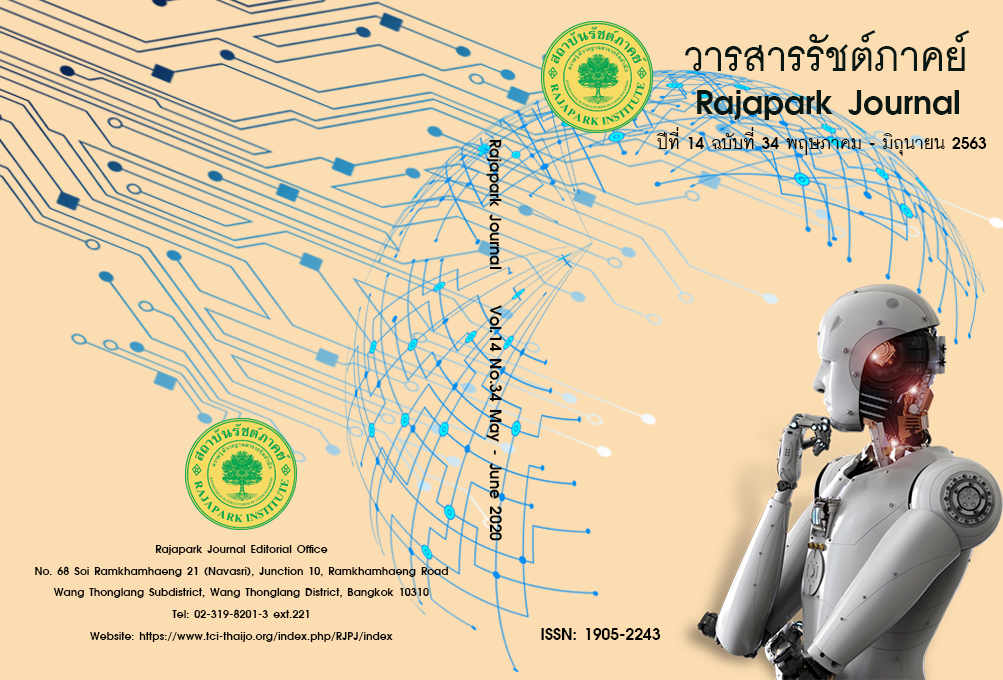Handling Difficult Customers Through Effective Communication
Main Article Content
Abstract
In the hospitality industry, customers’ satisfaction is a key factor that organizations must maintain to continue their business. Every service provider has faced problems with customer complaints due to dissatisfaction with services, which happens from time to time. Effective strategies and techniques are very essential for service providers to study, understand, and practice ways to handle customer complaints. Based on my service experience, I found that effective communication is crucial for handling customers who have had negative experiences with the organization or employees who are service providers. With effective communication, the organization can create satisfaction that motivates this group of customers to continue their business with the organization. As it is risky to face customers’ complaints repeatedly, entrepreneurs in the hospitality industry should recognize the importance of effective communication as a measure to handle customers who file complaints of their dissatisfaction.
Article Details
Views and opinions appearing in the Journal it is the responsibility of the author of the article, and does not constitute the view and responsibility of the editorial team.
References
Aaker, D. A. (1991). Managing brand equity: Capitalizing on the value of a brand name. New
York: Free Press.
Ahmad, R & Buttle, F. (2002). Customer retention management; a reflection of theory and
practice. Marketing Intelligence & Planning, 20(3), 149-161.
Arnould, E. J. (2004). Consumers (2nd ed.). USA: McGraw-Hill Companies.
Bolfing, C. P. (1989). How do Customers Express Dissatisfaction and What can Service Marketers
do About it. Journal of Services Marketing, 3(2), 5–23.
Boone, L. E., & Kurtz, D. L. (1998). Contemporary marketing wired (9th ed.). Orlando, FL: The
Dryden.
Buttle, F., & Burton, J. (2002). Does service failure influence customer loyalty. Journal of
Consumer Behavior, 1(3), 217–227.
Chaoprasert, Chaisomphon. (2006). Customer Complaint Management. Bangkok: SE-EDUCATION
Public Company Limited.
Christopher H. Lovelock, Sandra Van der Merwe, & Barbara R. Lewis. (1996). Service Marketing:
A European Prospective. University of Michigan.
Day, R. L., & Landon, E. L. (1977). Toward a theory of consumer complaining behavior, in
Woodside, A.G., Sheth, J. N. (Editor) and Bennett, P.D. (eds.) consumer and industrial
buying behavior. (pp. 425-437). New York: North-Holland.
Day, R. L. (1984). Modeling Choices among Alternative Responses to Dissatifaction. Advances in
Consumer Research, 11(1), 496–499.
Gina Jeenafu. (2018a). Ways to Reply Unanswered Questions. Retrieved March 11, 2018, from
https://www.youtube.com/watch?v=XghyJyEBBTk&t=2s
Gina Jeenafu. (2018b). Japanese People Increase Sales Turning Business through Communication.
Retrieved April 22, 2018, from https://www.youtube.com/watch?v=FLtxAHYRXug&t=166s
Ghobadian, A., Speller, S., & Jones, M. (2013, April 11). Service Quality. International Journal
of Quality & Reliability Management. MCB UP Ltd. Retrieved from
http://www.emeraldinsight.com/doi/full/10.1108/02656719410074297
Hansemark, O. C. and Albinsson, M. (2004); Customer Satisfaction and Retention: The Experiences
of Individual Employees, Managing Service Quality, 14(1), 40-57.
Harris, K. E. (2010). Customer Service: A Practical Approach. New York: Prentice Hall.
Heider, F. (1958). The psychology of interpersonal relations. New York: Wiley.
Heung, V. C. S., & Lam, T. (2003). Customer complaint behaviour towards hotel restaurant
services. International Journal of Contemporary Hospitality Management, 15(5), 283–289.
Impression Consulting. (2018). Retrieved May 3, 2018, from http://www.impressionconsult.com/
web/index.php/articles/409-article10092012.html
JobsDB. (2014). 8 Ways to communicate with Customers. Retrieved March 23, 2019, from
https://th.jobsdb.com/th-th/articles/
Jones, D. L. (2002). Consumer Complaint Behavior Manifestations for Table Service Restaurants:
Identifying Sociodemographic Characteristics, Personality, and Behavioral Factors. Journal
of Hospitality & Tourism Research, 26(2), 105-123.
Kotler, P. (2000). Marketing management (10th ed.). Upper Saddle River, NJ: Prentice Hall.
Oliver, R. L. (1980). A Cognitive Model of the Antecedents and Consequences of Satisfaction
Decisions. Journal of Marketing Research, 17(4), 460–469.
Oliver, R. L. (1999). Whence consumer loyalty. Journal of Marketing, 63(4), 33-44.
Parasuraman, A., Zeithaml, V.A., & Berry, L.L. (1986). SERVQUAL: A multiple item scale for
measuring customer perceptions of service quality. Cambridge, MA: Marketing Science
Institute. pp. 86-108.
Reichheld, F.F., & Sasser, Jr., W.E. (1990). Zero defections. Quality comes to services. Harvard
Business Review, 68(5), 105-111.
Sasaki Keiichi. (2015). Tsutaekata Ga 9 Wari translated by Tinnapas Pahanich. Bangkok:
We learn.
Schoefer, K. (2008). The role of cognition and affect in the formation of customer satisfaction
judgements concerning service recovery encounters, J. Consum. Behaviour, 7, 210-221.
Singh, J. (1988). Consumer complaint intentions and behavior: Definitional and taxonomical issues, Journal of Marketing, 52(1), 93-107.
Singh, J. (1991). Industry characteristics and consumer dissatisfaction, The Journal of Consumer
Affairs, 25(1), 19-56.
Singh, J., & Wilkes, R. E. (1996). When Consumers Complain: A Path Analysis of the Key
Antecedents of Consumer Complaint Response Estimates. Journal of the Academy
of Marketing Science, 24(4), 350–365.
Stauss, B., & Seidel, W. (2004). Complaint Management: The Heart of CRM. American
Marketing Association.
Technical Assistance Research Programs Institute. (1985). Consumer complaint handling in
America: an update study. Washington D.C.: TARP.
Tripp, T. M., & Yany Grégoire. (2011). When Unhappy Customers Strike Back on the Internet.
Magazine: Spring. Retrieved from http://sloanreview.mit.edu/article/when-unhappy-
customers-strike-back-onthe-internet
Treesuwan, Sophawan. (2007). Thai Tourist Expectations and Perceptions of Service Quality
Toward of Hotels in Ayuthaya. M.A. Hotel and Tourism Management. Naresuan University.
Tuntiwisanusopit, Bongkhot. (2015). Online Negative Complaint towards Service Restaurants
and The Service Response. Master of Science Marketing Management, Faculty of Commerce and
Accountancy. Thammasat University.
Zineldin, M. (2000). Total Relationship Management. Studentlitteratur, Sweden.


